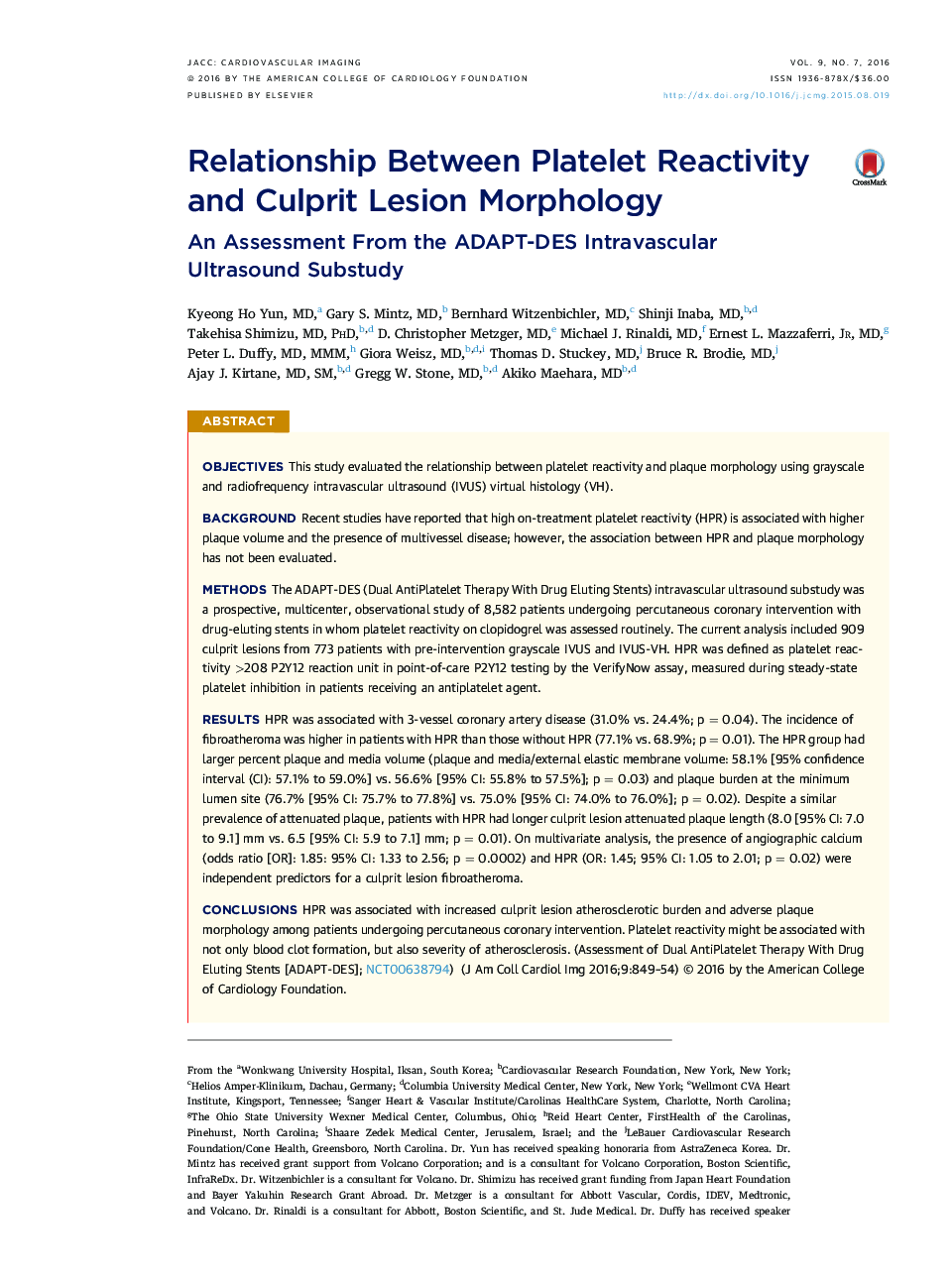| کد مقاله | کد نشریه | سال انتشار | مقاله انگلیسی | نسخه تمام متن |
|---|---|---|---|---|
| 5979949 | 1176892 | 2016 | 6 صفحه PDF | دانلود رایگان |

ObjectivesThis study evaluated the relationship between platelet reactivity and plaque morphology using grayscale and radiofrequency intravascular ultrasound (IVUS) virtual histology (VH).BackgroundRecent studies have reported that high on-treatment platelet reactivity (HPR) is associated with higher plaque volume and the presence of multivessel disease; however, the association between HPR and plaque morphology has not been evaluated.MethodsThe ADAPT-DES (Dual AntiPlatelet Therapy With Drug Eluting Stents) intravascular ultrasound substudy was a prospective, multicenter, observational study of 8,582 patients undergoing percutaneous coronary intervention with drug-eluting stents in whom platelet reactivity on clopidogrel was assessed routinely. The current analysis included 909 culprit lesions from 773 patients with pre-intervention grayscale IVUS and IVUS-VH. HPR was defined as platelet reactivity >208 P2Y12 reaction unit in point-of-care P2Y12 testing by the VerifyNow assay, measured during steady-state platelet inhibition in patients receiving an antiplatelet agent.ResultsHPR was associated with 3-vessel coronary artery disease (31.0% vs. 24.4%; p = 0.04). The incidence of fibroatheroma was higher in patients with HPR than those without HPR (77.1% vs. 68.9%; p = 0.01). The HPR group had larger percent plaque and media volume (plaque and media/external elastic membrane volume: 58.1% [95% confidence interval (CI): 57.1% to 59.0%] vs. 56.6% [95% CI: 55.8% to 57.5%]; p = 0.03) and plaque burden at the minimum lumen site (76.7% [95% CI: 75.7% to 77.8%] vs. 75.0% [95% CI: 74.0% to 76.0%]; p = 0.02). Despite a similar prevalence of attenuated plaque, patients with HPR had longer culprit lesion attenuated plaque length (8.0 [95% CI: 7.0 to 9.1] mm vs. 6.5 [95% CI: 5.9 to 7.1] mm; p = 0.01). On multivariate analysis, the presence of angiographic calcium (odds ratio [OR]: 1.85: 95% CI: 1.33 to 2.56; p = 0.0002) and HPR (OR: 1.45; 95% CI: 1.05 to 2.01; p = 0.02) were independent predictors for a culprit lesion fibroatheroma.ConclusionsHPR was associated with increased culprit lesion atherosclerotic burden and adverse plaque morphology among patients undergoing percutaneous coronary intervention. Platelet reactivity might be associated with not only blood clot formation, but also severity of atherosclerosis. (Assessment of Dual AntiPlatelet Therapy With Drug Eluting Stents [ADAPT-DES]; NCT00638794)
Journal: JACC: Cardiovascular Imaging - Volume 9, Issue 7, July 2016, Pages 849-854